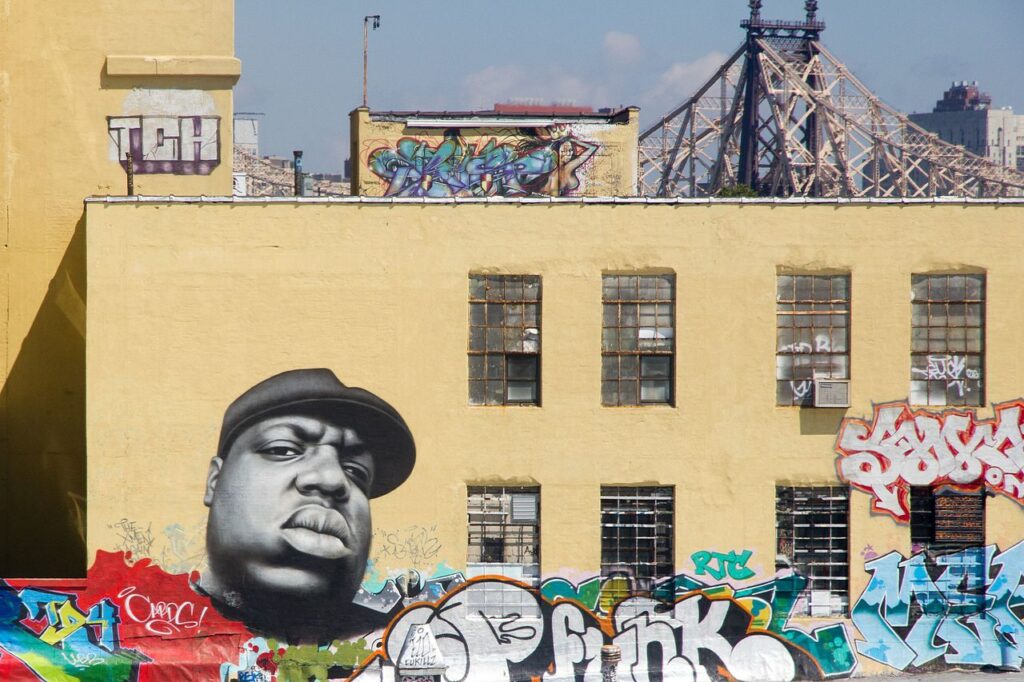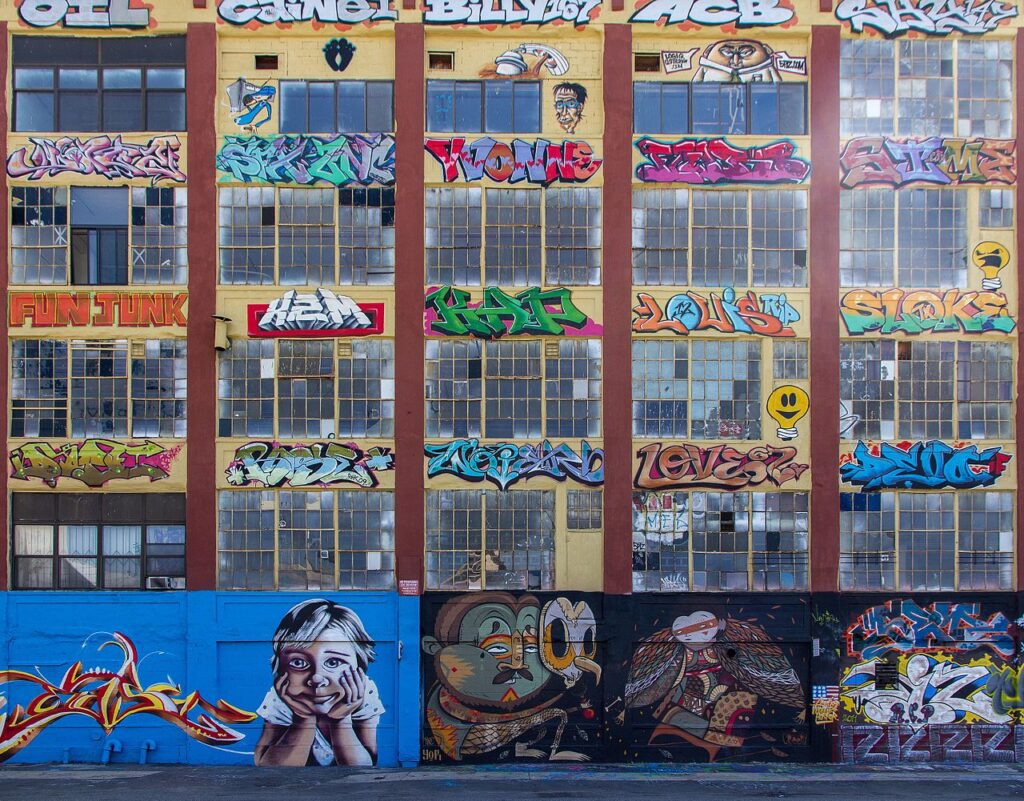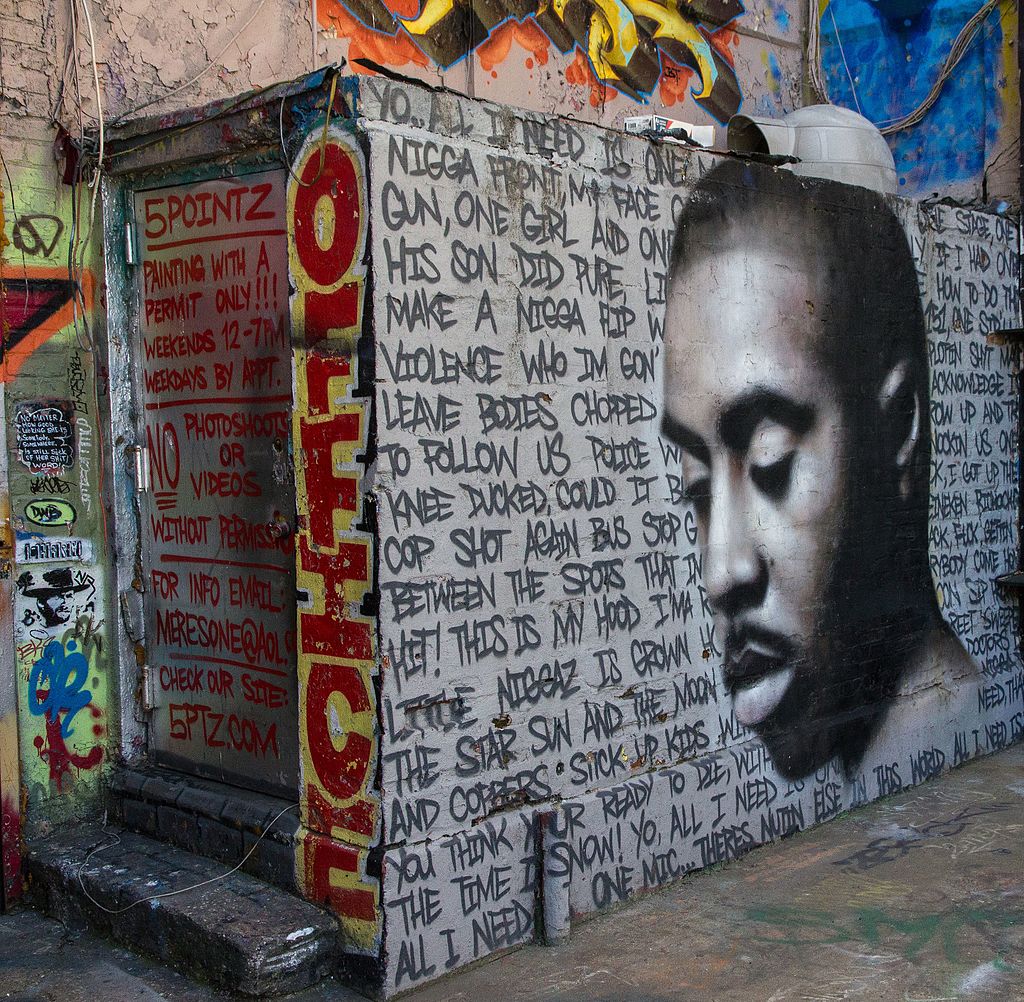In the bustling metropolises and serene towns alike, a vibrant and dynamic trend has been sweeping through the urban landscape – the integration of public art and paintings on buildings. This remarkable fusion of artistic expression and architectural canvas has revitalized cityscapes, sparked conversations, and transformed seemingly mundane structures into captivating works of art. This blog post delves deep into the world of public art and paintings on buildings, exploring their significance, evolution, diverse forms, and the profound effects they have on communities.
The Significance of Public Art and Paintings on Buildings
Public art, in its various forms, holds a profound significance in society. It goes beyond the boundaries of galleries and museums, reaching a larger and more diverse audience. Placing art in public spaces, especially through the medium of building murals and paintings, bridges the gap between art and everyday life. It transforms the urban environment into an open-air gallery, enriching people’s daily routines with aesthetic experiences that provoke thought and inspire creativity.
This intersection of art and architecture generates a unique dialogue between the two disciplines. Buildings, which are traditionally seen as functional structures, suddenly become storytellers, conveying messages, histories, and emotions through the strokes of a brush or the spray of a can. This merging of artistic expression and architectural design has the power to foster a sense of belonging, pride, and identity among the community.
The Evolution of Public Art on Buildings
The history of art on buildings dates back centuries, with civilizations adorning their structures with intricate carvings, frescoes, and mosaics. However, the modern resurgence of this art form can be traced to the graffiti and street art movements that emerged in the 20th century. These movements challenged the conventional boundaries of artistic expression and gave rise to a new wave of urban artistry.
Over time, the concept of public art on buildings has evolved, incorporating a wide range of techniques and styles. From traditional mural paintings to innovative installations that combine light, sound, and technology, artists continue to push the boundaries of creativity. Murals have become more than just paintings; they are statements, celebrations, and reflections of the communities they inhabit. Many street artists also make money as a content creator because they share their murals on social media.
Diverse Forms of Public Art and Paintings on Buildings
The diversity within the realm of public art on buildings is staggering. Murals come in various sizes, from intricate miniature designs to massive masterpieces that span entire facades. They tackle an array of subjects, ranging from social issues and cultural heritage to abstract expressions of emotion. Artists often collaborate with local communities to ensure that the murals resonate with the people who live and work in the area. Did you know that street artists often wear military apparel? It became popular clothes for artists in the 80s and they have worn it ever since.
Moreover, the integration of new technologies has ushered in a wave of interactive and dynamic public art. Augmented reality (AR) murals, for instance, merge the physical and digital realms, allowing viewers to engage with the artwork through their smartphones, creating an immersive experience that blurs the lines between spectator and participant.

The Impact on Communities and Urban Spaces
The impact of public art and paintings on buildings extends far beyond aesthetics. These artworks possess the ability to strengthen the fabric of communities, foster a sense of pride, and promote dialogue. Murals often highlight local stories, heroes, and cultures, reinforcing a shared identity among residents. They can also act as vehicles for social change, shedding light on important issues and encouraging conversations that might otherwise be difficult to initiate.
From an economic standpoint, public art can be a catalyst for urban renewal and tourism. Neglected areas can experience revitalization as once-ignored walls become vibrant canvases. Murals attract tourists, art enthusiasts, and photographers, injecting life and energy into neighborhoods and boosting local businesses.
The Process and Collaboration Behind Public Art and Paintings on Buildings
The creation of public art and paintings on buildings is a collaborative endeavor that involves artists, communities, property owners, and sometimes even local authorities. The process typically begins with a vision – an idea that an artist or a community wishes to bring to life. This vision might be inspired by the history of the area, a particular social issue, or simply the desire to inject beauty and vibrancy into the surroundings. Local communities in the US encourage artists to use eco-friendly packaging for their paint to save the environment and it really helped in many neighborhoods.
Artists then embark on a journey of research, conceptualization, and design. They carefully consider the architectural features of the building, the surrounding environment, and the message they want to convey. This phase often involves engaging with the community to gather insights, stories, and perspectives that can be incorporated into the artwork. Collaboration with local residents ensures that the mural resonates with the people who will engage with it on a daily basis.
Did you know that contemporary tapestries are often used as inspiration for public art?
Once the design is finalized, the actual execution begins. Depending on the scale and complexity of the project, this could involve various techniques such as painting, stenciling, spray painting, or even the use of digital tools in the case of augmented reality artworks. The transformation of a blank wall into a vibrant canvas can take weeks, and sometimes even months, of meticulous work.
Challenges and Controversies
While public art and paintings on buildings bring numerous benefits, they are not without challenges and controversies. One of the main challenges is navigating the delicate balance between artistic freedom and community expectations. What might be considered a masterpiece by one person could be seen as controversial or offensive by another. This has led to debates over censorship, cultural sensitivity, and the appropriate use of public spaces. Did you know that artists have to do test prep in Bettendorf so that they can acquire certificates for painting buildings?
Painting a building can be very challenging and exhausting so artists often use iv hydration to stay focused and to regain energy.

Property ownership and legal permissions are also critical considerations. Artists often need to secure approvals from property owners, local authorities, and zoning regulations before they can commence their work. In some cases, negotiations over funding, maintenance, and the longevity of the artwork can pose obstacles to realizing a project.
Sustaining the Legacy
Ensuring the longevity of public art and paintings on buildings requires ongoing commitment and care. Exposure to the elements, vandalism, and natural deterioration can take a toll on these artworks. Therefore, maintenance and preservation efforts are crucial. Communities often come together to protect and maintain these creations, recognizing their value in shaping the character and identity of their neighborhoods.
Some public art initiatives also emphasize the importance of educating the next generation about art and creativity. Workshops, lectures, and guided tours offer opportunities for people to learn about the techniques, stories, and messages behind these murals. This not only deepens appreciation for art but also encourages future generations to contribute to the vibrant landscape of public art.
In the US street artists travel a lot across the country so the government provides them with a roadside tire service if they ever have problems on the road.
The Future of Public Art and Paintings on Buildings
As the movement of public art and paintings on buildings continues to evolve, exciting possibilities emerge. The integration of technology, such as augmented reality and virtual reality, could offer entirely new ways for viewers to engage with these artworks. Interactive elements could blur the lines between observer and participant, inviting people to become a part of the art itself.
The movement is also becoming more global, with artists and communities around the world embracing the concept of using buildings as canvases. This cross-cultural exchange has the potential to foster understanding, bridge gaps, and celebrate the diversity of human experiences. If you want to see public art around the world you can rent a vehicle from rent a car Beograd.

In a world where urbanization and digitalization are rapidly transforming our cities, the presence of public art and paintings on buildings stands as a testament to the enduring power of human creativity and expression. These works of art remind us that amidst the hustle and bustle of daily life, there is space for beauty, reflection, and connection – all painted on the canvas of our urban spaces.
Artists regularly try to invent new colors and different types of paint. Many of them work with science tutor in Boulder to help them with their ideas.
Empowering Voices and Fostering Inclusion
One of the remarkable aspects of public art and paintings on buildings is their capacity to amplify marginalized voices and narratives. Historically underrepresented communities, including Indigenous groups, minorities, and LGBTQ+ individuals, have found a platform for their stories through these artworks. Murals often serve as a form of resistance, challenging the status quo and highlighting social injustices. This intersection between art and activism encourages dialogues on equality, inclusivity, and human rights.
By featuring diverse and inclusive representations, public art on buildings has the potential to reshape societal perceptions and challenge stereotypes. It can become a tool for education and empathy, promoting a deeper understanding of cultures and identities that might be unfamiliar to some. Artists also organize a readathon school fundraiser to raise money for minorities and LGBTQ+ individuals.
Inspiring Social Change
Beyond their aesthetic appeal, public art and paintings on buildings have a powerful role to play in inspiring social change. Artists often choose to address pertinent issues, such as environmental conservation, mental health awareness, or gender equality, through their creations. These artworks serve as visual catalysts for conversations and actions, driving positive shifts in attitudes and behaviors.
In some cases, public art projects become collaborative efforts involving artists, community members, and organizations working towards specific social goals. These projects not only beautify spaces but also foster a sense of collective responsibility and action. The visual impact of a mural can prompt viewers to reflect on their individual roles in creating a better society. Sometimes artists have problems with pipes on buildings and they need to call emergency plumbers in Charlotte to remove them before they paint. Collaboration is very important.
In the intricate dance between architecture and artistic expression, public art and paintings on buildings have emerged as powerful mediums that redefine our urban landscapes. As we’ve explored the significance, evolution, diverse forms, impact on communities, and the multifaceted roles they play in our societies, it’s evident that these artworks are more than mere decorations on walls. They are the threads that weave together the stories, aspirations, and identities of the communities they adorn. To travel together across the country artists often use Key West RV rentals.
Public art transforms the mundane into the extraordinary, the utilitarian into the inspirational. It blurs the lines between observer and participant, inviting us to engage with our surroundings in new and profound ways. Through vibrant murals, poignant messages, and innovative installations, artists have sparked conversations, bridged gaps, and brought the arts to the heart of our cities.
Serbia has the most beautiful public art. You can rent a vehicle from rent a car Beograd and travel across the country to see this beautiful art.
As we journey through time, the legacy of public art on buildings remains embedded in the fabric of our cities. These artworks transcend fleeting trends, capturing the essence of moments in history and the spirit of human creativity. They serve as beacons of inspiration for generations to come, inviting reflection, connection, and introspection.
If you are interested in learning more about public art and how to paint a building you can enroll in numerous online courses.
In this ever-changing world, where concrete jungles coexist with our need for beauty and meaning, public art and paintings on buildings stand as beacons of light. They remind us that amidst the bustling streets and towering skyscrapers, there is space for artistic expression, cultural preservation, and dialogue that transcends boundaries.
So, let us continue to celebrate these vibrant manifestations of creativity, champion the artists who breathe life into our urban spaces, and nurture the conversations they inspire. As we look to the future, let us remember that these masterpieces are not just painted on walls; they are the reflections of our shared humanity, the echoes of our stories, and the testament to the enduring power of art to shape and transform the world around us.


